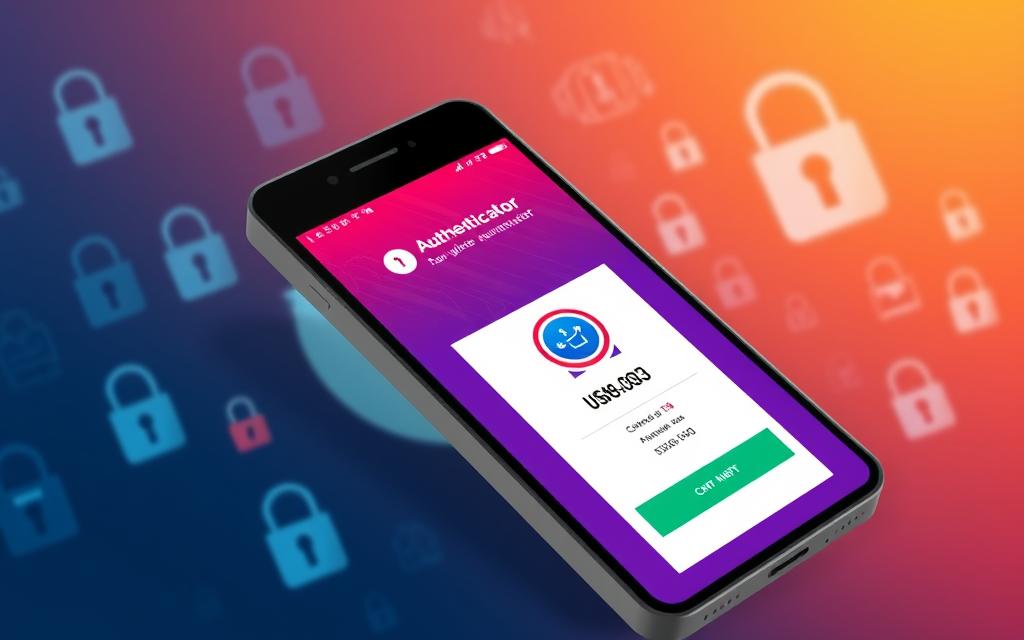Discover essential strategies and best practices on how to protect personal data security at work. Safeguard your information and your company’s assets effectively.
In today’s digital age, understanding how to protect personal data security at work is more crucial than ever. With cyber threats evolving rapidly and data breaches becoming increasingly common, employees must take proactive steps to safeguard their personal information and their company’s sensitive data.
This comprehensive guide will explore various strategies and best practices on how to protect personal data security at work, ensuring that you’re well-equipped to handle the challenges of the modern workplace.
Table of Contents
ToggleUnderstanding the Importance of Personal Data Security at Work
Personal data security at work is not just a matter of individual privacy; it’s a cornerstone of organizational integrity and trust. When employees know how to protect personal data security at work, they contribute to a culture of vigilance that benefits everyone. This includes safeguarding customer information, proprietary company data, and sensitive personal details that could be exploited by malicious actors.
The consequences of neglecting personal data security can be severe, ranging from identity theft to corporate espionage. By learning how to protect personal data security at work, you’re not only shielding yourself from potential harm but also fulfilling your professional responsibility to your employer and clients. It’s a skill that has become as essential as any other job-related competency in the modern workplace.
Key Strategies on How to Protect Personal Data Security at Work
When it comes to understanding how to protect personal data security at work, there are several key strategies that every employee should master. These techniques form the foundation of a robust personal data security approach and can significantly reduce the risk of data breaches or unauthorized access to sensitive information.
Implementing these strategies consistently is crucial in maintaining a secure work environment. By making these practices a part of your daily routine, you’ll be taking significant steps towards protecting both your personal data and your organization’s valuable information assets. Let’s explore some of the most effective methods for ensuring data security in the workplace.
1. Strong Password Management
One of the fundamental aspects of learning how to protect personal data security at work is mastering the art of password management. Strong, unique passwords are your first line of defense against unauthorized access to your accounts and sensitive information. Creating complex passwords that combine uppercase and lowercase letters, numbers, and special characters can significantly enhance your security.
However, remembering multiple complex passwords can be challenging. This is where password managers become essential. These tools can generate and securely store strong, unique passwords for all your accounts, allowing you to maintain robust security without the burden of memorizing numerous complex strings. Regular password changes and avoiding the use of personal information in your passwords are also crucial steps in how to protect personal data security at work.
2. Two-Factor Authentication (2FA)
Implementing two-factor authentication (2FA) is another critical step in learning how to protect personal data security at work. This additional layer of security requires users to provide two different authentication factors to verify their identity, making it significantly more difficult for unauthorized users to gain access to sensitive information.
2FA typically combines something you know (like a password) with something you have (like a smartphone) or something you are (like a fingerprint). By enabling 2FA on your work accounts, you add an extra barrier against potential intruders. Even if someone succeeds in acquiring your password, they would still require the second factor to access your account. This simple yet effective measure is a cornerstone of how to protect personal data security at work and should be implemented whenever possible.
3. Regular Software Updates and Patch Management
Keeping your software up-to-date is a crucial aspect of learning how to protect personal data security at work. Software developers regularly release updates and patches to address newly discovered vulnerabilities and improve security features. By promptly installing these updates, you ensure that your systems have the latest protection against known threats.
This practice extends beyond just your operating system; it includes all software applications you use for work, including browsers, email clients, and productivity tools. Many organizations have automated update processes, but it’s important to be proactive and check for updates regularly, especially on personal devices used for work purposes. Staying current with software updates is an essential part of how to protect personal data security at work and helps maintain a robust defense against evolving cyber threats.
4. Secure Network Connections
Understanding how to protect personal data security at work involves being mindful of the networks you connect to. When working remotely or accessing work-related information outside the office, it’s crucial to use secure network connections. Public Wi-Fi networks, while convenient, can be breeding grounds for cybercriminals looking to intercept data.
To mitigate these risks, always use a Virtual Private Network (VPN) when connecting to public Wi-Fi. A VPN encrypts your internet traffic, making it much harder for anyone to intercept or spy on your online activities. Additionally, avoid accessing sensitive work information on public networks whenever possible. If you must use public Wi-Fi, treat all networks as potentially compromised and take extra precautions. This awareness of network security is a key component of how to protect personal data security at work in our increasingly mobile work environments.
5. Email Security and Phishing Awareness
Email remains one of the primary vectors for cyber attacks, making email security a critical aspect of how to protect personal data security at work. Phishing attempts, where attackers try to trick you into revealing sensitive information or clicking on malicious links, are particularly common and can be quite sophisticated.
To protect yourself, always be cautious when opening emails from unknown senders. Exercise caution with unexpected attachments or links, even if they seem to originate from a reliable source. Learn to recognize the signs of phishing emails, such as poor grammar, urgent requests for sensitive information, or slightly off email addresses.
Many organizations provide phishing awareness training, which can be invaluable in honing your ability to spot and avoid these threats. Remember, a healthy dose of skepticism when dealing with emails is a key part of how to protect personal data security at work.
Advanced Techniques for Personal Data Security at Work

As we delve deeper into how to protect personal data security at work, it’s important to explore some more advanced techniques. These methods build upon the foundational strategies and offer an extra layer of protection for those who handle particularly sensitive information or work in high-risk environments.
By incorporating these advanced techniques into your security routine, you can significantly enhance your ability to protect personal and professional data. While some of these methods may require additional effort or technical knowledge, they represent best practices in how to protect personal data security at work in today’s complex digital landscape.
1. Encryption of Sensitive Data
Encryption is a powerful tool in the arsenal of how to protect personal data security at work. It entails transforming data into a coded format to prevent unauthorized access. When data is encrypted, even if it falls into the wrong hands, it remains unreadable without the correct decryption key.
For personal use, consider encrypting your hard drive, especially on laptops or mobile devices that might be lost or stolen. Many operating systems offer built-in encryption tools. For sharing sensitive files, use encrypted file-sharing services or encrypt individual files before sending them. Understanding and implementing encryption is an advanced but crucial step in how to protect personal data security at work, especially for those handling highly confidential information.
2. Regular Security Audits and Assessments
Conducting regular security audits is an proactive approach to how to protect personal data security at work. These assessments help identify potential vulnerabilities in your personal security practices and the overall security posture of your work environment.
Start by regularly reviewing your own digital footprint. Check which applications have access to your work accounts, review your social media privacy settings, and assess the security of your personal devices used for work.
For a more comprehensive approach, participate in or advocate for organization-wide security audits. These can include penetration testing, where ethical hackers attempt to breach your company’s defenses to identify weaknesses. Regular audits ensure that your approach to how to protect personal data security at work remains effective against evolving threats.
3. Secure File Disposal and Data Sanitization
Understanding how to protect personal data security at work includes knowing how to securely dispose of data when it’s no longer needed. Simply deleting files or formatting a drive often leaves data recoverable with the right tools. This can lead to sensitive information falling into the wrong hands, even from discarded or recycled devices.
To prevent this, use secure file deletion tools that overwrite data multiple times, making it unrecoverable. For physical documents, use a cross-cut shredder rather than a strip-cut one.
When disposing of old devices, ensure they are properly sanitized by either using specialized software or physically destroying the storage components. This thorough approach to data disposal is a critical but often overlooked aspect of how to protect personal data security at work.
4. Implementing a Zero Trust Security Model
The Zero Trust security model is an advanced concept in how to protect personal data security at work. This approach operates on the principle of “never trust, always verify,” assuming that threats can come from both outside and inside the network.
In practice, this means verifying every access request as if it originates from an open network, regardless of where the request comes from or what resource it’s accessing. For individuals, this might involve using multi-factor authentication for all accounts, regularly verifying the identity of contacts requesting sensitive information, and being cautious even with seemingly internal communications. While primarily an organizational strategy, understanding and adhering to Zero Trust principles can significantly enhance your personal approach to how to protect personal data security at work.
Creating a Culture of Security Awareness
Understanding how to protect personal data security at work is not just about individual actions; it’s about fostering a culture of security awareness throughout the organization. When every employee is engaged in and committed to data security, the overall protection of sensitive information is significantly enhanced.
Building this culture requires ongoing effort, education, and reinforcement. It involves making security a part of everyday conversations and decision-making processes. By cultivating a security-conscious environment, organizations can create a human firewall that complements technical security measures, further strengthening their approach to how to protect personal data security at work.
1. Regular Training and Education
Continuous education is a cornerstone of how to protect personal data security at work. The landscape of cyber threats is constantly evolving, and staying informed about the latest risks and protection strategies is crucial. Regular training sessions can keep employees up-to-date on best practices and new threats.
These training sessions should cover a range of topics, from basic password hygiene to more complex subjects like recognizing sophisticated phishing attempts or handling sensitive data. Interactive workshops, simulations, and real-world examples can make these sessions more engaging and effective. By investing in ongoing education, organizations ensure that all employees have the knowledge and skills necessary to contribute to the collective effort of how to protect personal data security at work.
2. Encouraging Incident Reporting
An essential aspect of how to protect personal data security at work is creating an environment where employees feel comfortable reporting potential security incidents or concerns. Many data breaches could be mitigated or prevented entirely if suspicious activities were reported promptly.
Encourage a no-blame culture where employees are praised for reporting concerns, even if they turn out to be false alarms. Provide clear, easy-to-follow procedures for reporting potential security issues.
This could include setting up a dedicated email address or hotline for security concerns. By fostering an open reporting culture, organizations can detect and respond to threats more quickly, enhancing their overall approach to how to protect personal data security at work.
Balancing Convenience and Security in Personal Data Protection at Work
One of the challenges in implementing strategies on how to protect personal data security at work is striking the right balance between security and convenience. Overly cumbersome security measures can lead to employee frustration and attempts to circumvent these measures, potentially creating new vulnerabilities.
Finding this balance requires thoughtful consideration of both security needs and user experience. It involves selecting security solutions that provide robust protection without significantly impeding workflow. By achieving this balance, organizations can ensure that their approaches to how to protect personal data security at work are not only effective but also sustainable and widely adopted by employees.
1. User-Friendly Security Tools
When implementing tools and processes for how to protect personal data security at work, it’s crucial to choose solutions that are user-friendly. Security measures that are difficult to use or understand are more likely to be ignored or bypassed, defeating their purpose.
Look for security tools with intuitive interfaces and streamlined processes. For example, password managers that integrate seamlessly with browsers can make using complex, unique passwords much more convenient. Similarly, single sign-on (SSO) solutions can enhance security while reducing the burden on users to remember multiple passwords. By prioritizing usability in security tools, organizations can improve adoption rates and strengthen their overall approach to how to protect personal data security at work.
2. Customized Security Policies
Recognizing that different roles within an organization may have different security needs is an important aspect of how to protect personal data security at work. A one-size-fits-all approach to security can be either too restrictive for some or not stringent enough for others.
Implement role-based access controls and security policies that align with the specific needs and risk profiles of different departments or job functions. For instance, employees handling sensitive financial data might require stricter security measures compared to those in marketing. By tailoring security policies to specific roles, organizations can ensure appropriate protection without unnecessary restrictions, creating a more balanced and effective strategy for how to protect personal data security at work.
Conclusion
In conclusion, understanding how to protect personal data security at work is an essential skill in today’s digital workplace. It requires a combination of technical knowledge, vigilant practices, and a security-conscious mindset. From basic strategies like strong password management and two-factor authentication to more advanced techniques like encryption and implementing a Zero Trust model, each element plays a crucial role in safeguarding personal and organizational data.
Remember, protecting personal data security is not a one-time task but an ongoing process. It requires constant vigilance, regular updates to your knowledge and practices, and a commitment to fostering a culture of security awareness in your workplace.
By implementing the strategies discussed in this guide and staying informed about emerging threats and protection methods, you can significantly enhance your ability to protect personal data security at work.
Ultimately, how to protect personal data security at work is a shared responsibility. While organizations must provide the necessary tools and policies, it’s up to each individual to apply these practices consistently and stay alert to potential threats. By working together and making data security a priority, we can create safer, more secure work environments for everyone.














